It only stands to reason that a guy who cares enough to grow his own food, and develop methods for doing it effectively as part of a modern lifestyle, is concerned with diet and exercise.
After many years of research struggling with autoimmune, blood lipid and gastric issues, and doing a tremendous amount of both laboratory research and study, I decided to first go gluten-free, and then adopt paleo diet altogether.
The result is that at 49 years old I can run hurdles, do martial arts and feel great! My blood lipids, blood pressure and other objective measures of health are what they were when I was 18. I look and feel great! So can you.
Paleo diet has now become trendy, so when my publisher first approached me to write a book on the topic, I refused. I have absolutely zero interest in chasing trends just to make a buck. When I write a book it is to address a specific need, to address it comprehensively, and to address it in a unique and enlightening way that actually helps people. If it happens to make money, that’s great — but a secondary consideration. My reputation for writing worthwhile books that help people is more important.
But I looked at existing books on the topic over the next six months, and I discovered they were either of overall poor quality, inadequately researched and accompanied by hyperbole, completely neglected important aspects of diet such as gut bacteria, ignored the concepts of evolutionary exercise, or were needlessly laden with jargon people don’t understand.
Modern Caveman is comprehensive. Not only does it contain over 200 citations of studies and other research to backup its claims, but it thoroughly explains not just what you should eat, but why. Just the chapter on oils and fats is worth the price of the book, because it demystifies the mumbo jumbo and alone might save your life. Because I had answered questions for friends about paleo diet for years before writing the book, this book is written to answer nearly every question you might have.
Like all of my books, Modern Caveman integrates knowledge from a variety of fields, so it contains vital information not covered in other books including:
- How your gut bacteria sabotage your efforts to change your diet, and how to fix that problem.
- Caveman lifestyle issues beyond diet, and their impact on mental and emotional health.
- Why birth control pills should not be used to treat acne in teenage girls.
- A complete progressive scalable exercise regimen based on solid research that will keep you in peak health and can even be started by desk jockeys. In only 30 minutes three times a week!
- Why what your coach in high school taught you about stretching is wrong, and what you should really be doing.
- Maintaining your sense of balance and proprioception into healthy advanced age.
- Maintaining and enhancing your fertility (for both men and women) and attractiveness.
- The nature of cancer as a preventable metabolic disorder. (Has it struck you as odd that though smoking rates have declined by 50%, lung cancer rates have remained unchanged? This book explains why!)
- A full explanation of lectins and their evolutionary role.
- Easy supermarket check lists.
- Much more!
Modern Caveman is obviously a large book, but don’t let that dissuade you. Despite the academic citations and underlying science, all of the biochemistry is explained and the information is presented in an entertaining way with humor sprinkled throughout!
Most importantly, not only will you love this book, it will literally change your life. It demonstrates irrefutably why a caveman diet is not just a fad: it’s the real deal. It’s a way of eating, moving and living that will add real quality to your life, every day of your life.
You can buy Modern Caveman at Amazon, Barnes and Noble, Indie Bound and at fine independent book stores such as Toadstool.
Mini Farming: Self-Sufficiency on 1/4 Acre 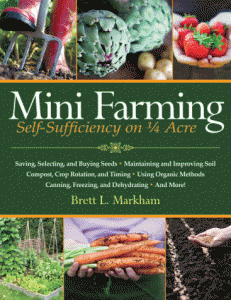
If there is only one book that you need for core food self-sufficiency, Mini Farming: Self-Sufficiency on 1/4 Acre is that book.
Though anyone can learn from another person’s insight, this book is not intended for organic farmers with 50 years of experience and a PhD in soil science. Rather, the purpose of this book is to coalesce that sort of experience into a straightforward and actionable system that maximizes the positive economic impact of raising food while minimizing space and effort. This book compresses a lot of information into an accessible format that anyone can understand and use without sacrificing more advanced skills. I wrote this book with the specific purpose in mind of convincing home owners and renters with small lots that you CAN raise a lot of food in a small area in a way that is economically beneficial.
The book weighs in at a hefty 2.4 pounds and includes:
- The economics of mini-farming and why sustainable practices are a prerequisite to home gardening being an economic positive rather than a break-even affair at best.
- A comprehensive description of soil biology and fertility, along with composting practices, biochar, cover cropping, crop rotation, how to make your own fertilizers, micro-nutrients and more.
- Raised beds, double-digging, seed starting, seed saving, and seed selection strategies are discussed. Tables are provided for determining the timing for starting seedlings and planting out your crops, as well as isolation distances for saving seeds.
- A unique three-part pest and disease management strategy is described in detail. The strategy takes all available organic methods into consideration including barriers, beneficial insects and organic sprays (including some you can make yourself).
- Getting the greatest productivity from your beds by inter-cropping, staggered plantings, optimal spacing, and timing the planting of cold-hardy crops for fall harvest.
- Growing fruit and nut trees as well as vines and cane fruit, including pruning and training techniques and dealing with the unique challenges of growing fruits organically.
- Raising chickens for eggs, meat and manure for compost, including guidelines for space and nests and complete step-by-step photos of processing chickens for meat.
- Plans for a unique and inexpensive chicken plucker that really works! Several people have made videos of the plucker in action, and one such video can be found here.
- I cover canning in a unique way that makes recipes unnecessary by demystifying the time requirements. Charts and tables are included and by understanding the principles used to determine the timing, you can literally can any recipe rather than being constrained to follow those in a book.
- I also cover blanching, freezing and dehydrating as methods of food preservation, and describe which foods are best processed by which method.
You can buy the book at most chain and independent books stores and even the Tractor Supply Company. You can also buy it via the following online sources:
Barnes and Noble Amazon Indie Bound
If you are looking for a large quantity of books for a college class or resale, you can buy them through W.W. Norton and Company.
Dehydrating is probably the oldest method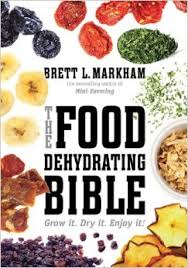 of food preservation. The foods will keep for years, lend themselves well to making your own convenience foods, and will keep even if you have no electricity
of food preservation. The foods will keep for years, lend themselves well to making your own convenience foods, and will keep even if you have no electricity
I have been dehydrating foods for 20 years, starting when I was down on my luck and had to live on a $30/week food budget. Now I do it because it helps me process large harvests and helps me make some of the best convenience foods! I covered the essentials of dehydrating in MiniFarming: Self-Sufficiency on 1/4 Acre, but The Dehydrating Bible goes into a lot more depth.
This book covers the how and why, including the science that underlies dehydrating. It describes everything you need to know about pre-treatments, marinades, storage and more. But just like in my other books, I don’t just tell you “what to do.” Instead, I explain the underlying principles and ideas so you have the knowledge to create your own marinades and recipes and handle situations that might not be specifically covered in the book.
The Dehydrating Bible covers proper and safe preparation, pre-treatment and dehydrating of fruits, vegetables and meats. But it also covers herbs and spices, and has a chapter dedicated to step-by-step instructions for building a cost-effective dehydrator large enough to handle big harvests. I give a lot of helpful hints that come from long hands-on experience so you’ll be an expert yourself in no time.
But the most useful feature of the book, the aspect you’ll likely use the most, is the section of recipes for making your own soups, stews, salad dressing mixes, and convenience foods like instant oatmeal and instant mashed potatoes.
A long time ago, I was living pretty much hand-to-mouth and I would do most of my cooking in a thermos. I grew vegetables in a secret plot under some high voltage lines. I couldn’t always afford to keep my electricity on. Over time, I developed a ton of recipes for making and combining dehydrated foods to make delicious and healthful meals. The food was so good, even today my daughter sometimes asks for me to make it for her.
I’m not living hand to mouth these days, but the recipes remain and are just as good — and I share them with you in the book.
If you have undertaken Mini-Farming, you likely have some really large harvests to handle. The large-scale dehydrator I describe in the book can have twice the capacity of the largest countertop dehydrators and costs less than half as much to build. Combined with canning, freezing and pickling, this will help you put away a lot of veggies in a short time!
The Food Dehydrating Bible is available from Amazon, Barnes and Noble, Indie Bound and independent bookstores.
Mini Farming: Self-Sufficiency on 1/4 Acre contains everything you need to know to successfully start and run a mini farm. But even with all of that, it takes time and experience to optimally apply the information it contains. The purpose of Maximizing your Mini Farm is to short-cut your experience curve to help you make the best decisions sooner and give you even more tools to help you mini farm more effectively, save money, and produce better food with less expense.
In this book, I assume you have already read or at least have access to its predecessor so I discuss soil techniques, but without the depth of coverage in the preceding volume. The exception is the discussion of soil pH and micro-nutrients, in which I give more detail.
The book is divided into three sections: Vegetables, Tools and Techniques, Fermented Foods
One thing I have not appreciated about many gardening books is the way they fill space by including a page on each vegetable that is essentially a rephrasing of the information on the back of the seed packet. It’s just filler. In order to find anything useful, such as how to prune indeterminate tomatoes or whether to plant a short-day or long-day onion at your latitude, you have to look all over the place.
I have included a chapter — not just a page — on each vegetable. In that chapter, I deal with the soil preparation, pest and disease problems and any unique considerations for that crop, as well as its unique nutritional attributes and even a unique recipe that in many cases will challenge your prior culinary ideas regarding how that vegetable should be eaten. For each vegetable I also describe how it is best preserved, which open-pollinated varieties that I prefer, as well as considerations for seed saving and more. I have some really excellent photos in the section on vegetables. Even if you are an experienced gardener, you’ll find a few tips in here that will help.
In the next section I address ways of making Mini Farming more time-efficient, including easy trellising, plans for a couple of different types of planting guides and illustrated methods for planting small seeds. I also cover methods of weed control. Though weed control isn’t generally a big problem in raised beds with closely-spaced crops, there are a few instances where it can be crucial, so I cover flame weeding, soil solarization and other manual methods with an eye toward time-efficiency.
In Mini Farming I covered food preservation through pickling, canning, dehydrating, freezing and cold storage. But one of the oldest methods of food preservation is fermentation, so to that end I cover the basics of making your own country wines, making your own vinegar and making your own cheese, including a couple of unique recipes.
There is a practical limit to the size of a book that can still be readable. Weighing in at 2.4 pounds, this book contains everything I wanted to include in Mini Farming but was unable due to weight constraints. I believe you’ll find this book a very useful addition to your library.
You can buy Maximizing your Mini Farm at many fine book stores, or via online retailers including:
Barnes and Noble Amazon Indie Bound
Mini Farming Guide to Vegetable Gardening 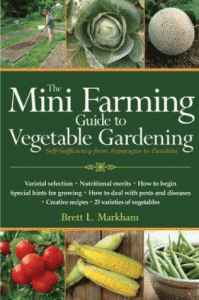
Many hobby gardeners simply enjoy gardening and aren’t necessarily interested in complete adoption of my system of Mini Farming. For folks like this, I wrote the Mini Farming Guide to Vegetable Gardening. This book contains the vegetable section from Maximizing your Mini Farm plus ads a chapter on permaculture of vegetables. If you are already have (or plan to get) Maximizing your Mini Farm, then you don’t need this book. But if you are interested in applying a lot of practical knowledge about various vegetables to your own existing methods, you’ll find this book helpful.
Each vegetable (or similar vegetables) has its own chapter, and each chapter explains the soil preparation, pest and disease problems and any unique considerations for that crop, as well as its unique nutritional attributes and even a recipe that in many cases will challenge your prior culinary ideas regarding how that vegetable should be eaten. For each vegetable I also describe how it is best preserved, which open-pollinated varieties that I prefer, as well as considerations for seed saving and more. Even if you are an experienced gardener, you’ll find a few tips in here that will help. Examples include:
- How to eliminate height differentials and shading in sweet corn
- How to prune indeterminate tomatoes for best production
- How to select onion varieties for your latitude and for preservation method
- How to eliminate potato blight by using true botanical seed, and how to collect that seed
- Coping with long germination times for carrots
- How to establish an asparagus bed that will produce for decades
- A wide array of unique and delicious greens
- And a lot more!
The Mini Farming Guide to Vegetable Gardening will be released on 6/1/2012 and can be found at finer bookstores or purchased online via
Indie Bound Amazon Barnes and Noble
Mini Farming Guide to Fermenting 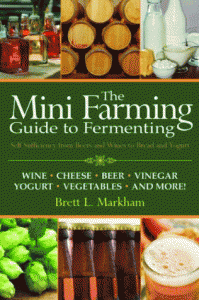
Fermenting is one of the oldest forms of food preservation, and also one of the most delicious. In Maximizing your Mini Farm I cover the basics of making country wine, vinegar and cheese, but in the Mini Farming Guide to Fermenting, I go into considerable depth while still keeping the material accessible. My goal in this book is not to give you a bunch of recipes that are copied by rote, but rather to explain how and why everything fits together from a scientific and culinary perspective that will allow you to make truly excellent gourmet foods that are better than those you can purchase at any price.
This book is divided into five sections: country wine, beer, vinegar, cheese and bread.
In the beginning, I discuss basic chemistry information that will help later with an in-depth understanding of wine, beer and vinegar. The sections on wine and beer are, in my opinion, some of the best you’ll ever find from a self-sufficiency perspective because they explain all of the factors involved in a systematic fashion that will allow you to create your own recipes.
In the chapters on wine you’ll learn how to use a juice machine for the best apple wine imaginable, how to balance acids and tannins and how to make your own fortified wines. I have included a lot of charts and tables to help you along, and have even included step-by-step procedures explaining how to do titrations related to malolactic fermentation. Though you will find some bigger books on the subject of wine making, most of the space in those books is dedicated to recipes. By dispensing with that and explaining how to create your own recipes, I have been able to use the space available more efficiently so you can learn a lot more.
In the chapters on beer you’ll learn how to make beer of a particular hue, how to make your own lautering tun, how to balance the complex sugars with hops and simplified methods to adjust your water chemistry for the best results for a given style of beer. I take you step-by-step through development of a recipe that many have tried and found excellent. Perhaps unique in my approach is the use of a secondary fermentation for ales that results in a very stable bottled beer with minimal sediment and excellent table qualities.
Using wine and beer as a starting place, I cover the manufacture of malt and wine vinegars. One of the largest problems with homemade vinegar from a self-sufficiency perspective is that vinegar of unknown strength can’t be used for pickling, so in the chapter on vinegar I also describe how to determine the strength of vinegar through titration, as well as how to predict the strength of vinegar produced by the amount of alcohol present in the starting wine or beer.
I take a mix and match approach to cheese that explains the different methods employed, and how they are combined to create different types of cheese. I then demonstrate this approach by creating four different cheeses that you can use as a basis for experimenting to create your own unique cheeses.
With breads I cover the most efficient means of using bread machines so they don’t just sit on your shelf collecting dust, but instead turn into money-saving machines, and also how to make your own artisan and sourdough breads using time-saving knead-free methods.
Though this book is a bit of a departure from farming, the large amount of money that people spend on fermented foods ranging from beer to bread definitely justifies the need from a self-sufficiency perspective. I think you’ll be impressed with how much I included in this book.
The Mini Farming Guide to Fermented Foods is available at better book stores, and it can be ordered through:
Amazon Indie Bound Barnes and Noble
Mini Farming Guide to Composting 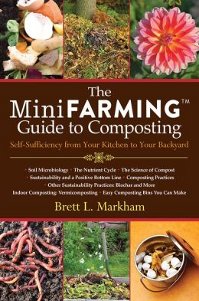
Over the years I have received more questions about composting than any other subject. I cover the essentials of thermophilic composting in Mini Farming: Self-Sufficiency on 1/4 Acre, but even though that form of composting is generally considered ideal, it is also the most labor intensive and not everyone interested in sustainability and self-sufficiency has either the time or the physical ability to shovel (literally) tons of compost.
The second most frequent questions I get pertain to soil fertility and soil management. Composting is intimately tied to these issues.
So the solution for me was simple: write a very comprehensive book on composting, soil fertility and soil management from a sustainability/MiniFarming perspective. Because this book was written following years of both reader feedback and personal experimentation, I am really pleased with the results and I’m sure you will be pleased too!
Everybody and his brother covers aerobic thermophilic composting, and so do I. After all, thermophilic composting is the only approved method for USDA certified Organic growing. But what is very rarely covered (if at all!) is anaerobic composting. I cover anaerobic and mesophilic composting thoroughly while also giving instructions on how to make your own anaerobic digester. Anaerobic and mesophilic composting are especially valuable if you have physical or time limitations. Because anaerobic composting can introduce safety issues, I very clearly spell out how to use anaerobic digesters and mesophilic compost safely.
If you have ever tried to save your kitchen scraps for composting, you’ve quickly discovered your indoor compost bin becomes a noxious fly-attractant. For those who like to compost indoors (or would like to do so, if only it didn’t smell so badly!), I have covered vermicomposting (composting inside using earth worms) and also an indoor rotating mesophilic aerobic composting bin and system. I’ve used both systems in my own home very successfully and I explain how to make them work for you.
The past few years have seen a large number of major natural disasters in the United States. In any disaster where running water and electricity become unavailable, one of the most urgent needs is proper sanitation when toilets won’t flush. Anywhere in the world without proper sanitation systems sees large numbers of deaths from diarrhea arising from the uncontrolled spread of intestinal pathogens. To make sure you know how to handle this, I dedicate a chapter to the proper handling and composting of human feces, showing both my own humanure toilet and humanure composting bin.
Compost tea has become popular. I cover the basics in Mini Farming: Self-Sufficiency on 1/4 Acre, but in this book, The MiniFarming Guide to Composting, I cover compost tea in depth. Not only do I demonstrate how to brew your own inexpensively, but I also cover the pros-and-cons of which compost is best to use for making compost tea and safety considerations in its use. Compost tea is not without controversy, but I demonstrate the difference in makes in soil bacteria populations with photographs I took through my microscope.
Though this book is among the most comprehensive on composting, I don’t short-change soil fertility! Composting is obviously a cornerstone of self-sufficiency and sustainable farming methods, but in order to know how much compost to add to your garden, you have to know how to measure the current biological fertility of your soil. I give two methods of how to do that. I also cover soil amendments for both macro and micro nutrients extensively, including all of the formulas needed for making your own fertilizers. Though I explain biochar in one of my earlier books, in this book I not only explain it more extensively, I even show how to make your very own biochar reactor and explain how it works.
When I look back at this book and all that it contains, I am really amazed. I can’t believe both the depth and breadth of information I crammed into it while still keeping it readable. When you’re done with this book, you’ll be a composting Ninja! Do not, however, blame me if unenlightened people look askance at your vermicomposting bin or composting toilet!
The MiniFarming Guide to Composting is available at finer book stores along with:
Amazon Barnes and Noble Indie Bound
If you are looking for a large quantity of books for a college class or resale, you can buy them through W.W. Norton and Company.


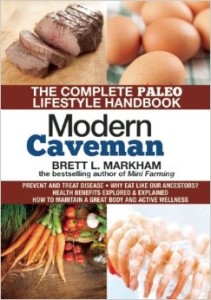
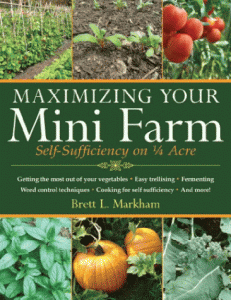
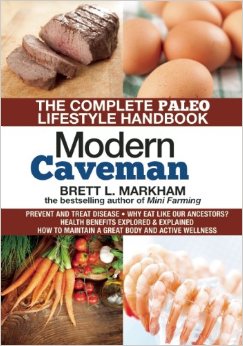
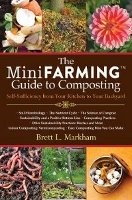
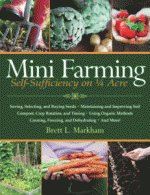
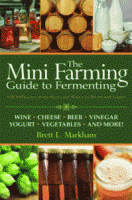
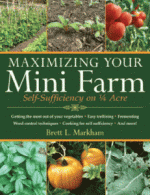
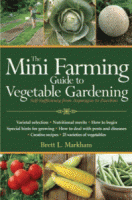
I am no longer sure where you’re getting your information, but great topic. I needs to spend some time learning more or figuring out more. Thank you for excellent info I was looking for this info for my mission.
[…] land for some time for my planned gardening attempts. After some short research I ordered the book Mini Farming – Self Sufficiency on 1/4 Acre by Brett L. Markham, which I can really recommend. We are still far away from being self-sufficient, but its a good […]
Greetings Mr. Markham,
I’ve been trying to grow my own food for 4 years. I’ve failed miserably. Each year gets better. I have several books on gardening, farming, self-sufficency and cooking. If I had to limit myself to a few books, I would choose your set of books. I’ve gotten the best straight forward information that I can apply and get predictable results. History, stories, lore, recipes are interesting but not very practicable. You offer principles, technique, science, and your experience that has increased my success.
Well done and thank you.
Bret Mosher O.M.D., L.Ac.
Poway, CA
—> Thank you so much! The whole reason I wrote the books is to be helpful!